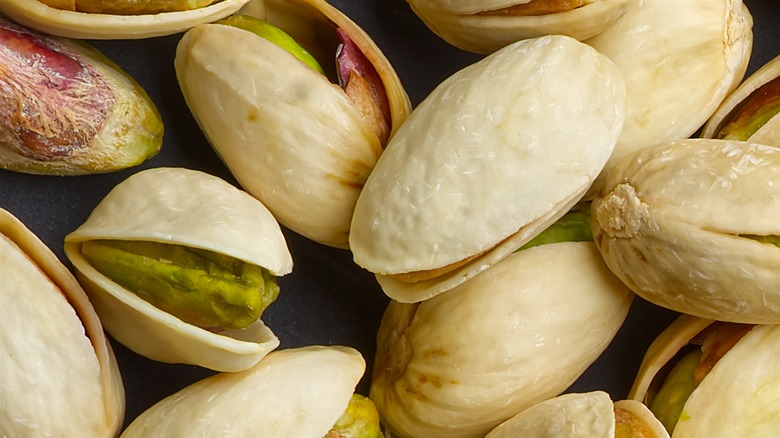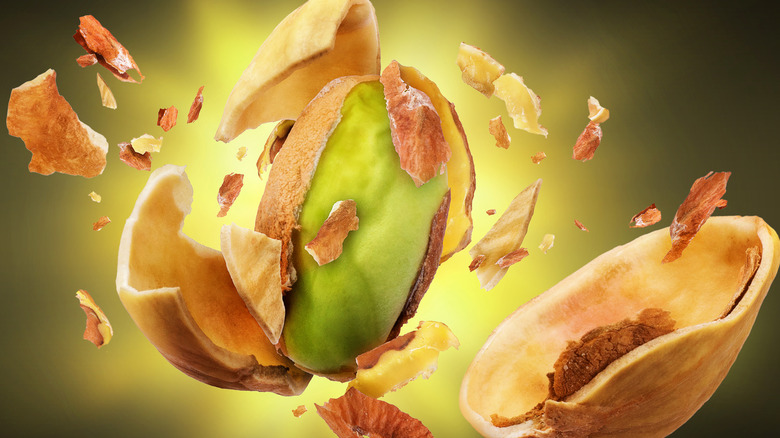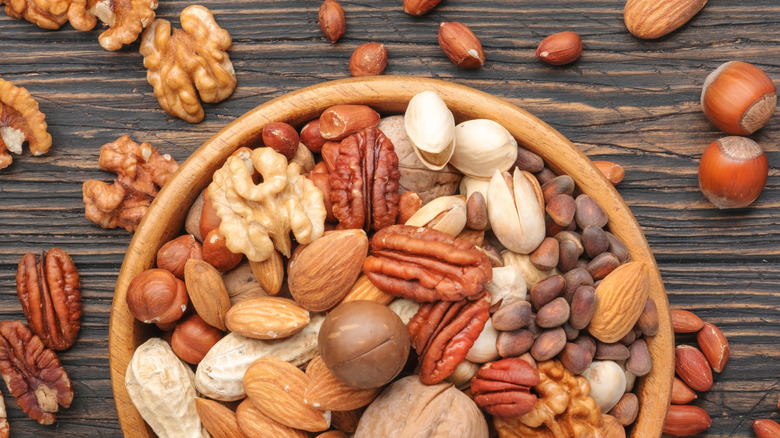Do Pistachios Actually Combust?
There are a lot of things you probably don't know about pistachios. For one thing, the tiny, green, nutty snack that many of us love so much is actually not a nut at all. Pistachios are technically drupes, as explained by The Guardian, a type of fruit in which the seed, or pit, is surrounded by a fleshy exterior, like peaches, cherries, and mangoes. When you eat a pistachio, you're really consuming the seed instead of the hardened outermost layer (the endocarp).
You also might not know that in some parts of the world, pistachios are considered capable of heating the body, and are consumed in the winter as a way to stay warm during the cold months. In fact, some research referenced in the Asia Pacific Journal of Clinical Nutrition suggests that consumption of these nutritionally dense snacks does cause the body to spend more energy and thus raise its own temperature.
The last thing you may not know is that pricey pistachios are tricky to transport in large quantities. While pistachios' high fat and protein content is what allegedly makes them a good snack in freezing temperatures, it's also what makes them flammable, under the right (or wrong) conditions ... and what can cause a barrel of them to combust.
It's true, pistachios can combust
You may have heard this before and thought it was just a rumor, but it's true that great care must be taken when shipping pistachios, especially overseas. The popular mid-afternoon treat has the tendency to generate heat on its own if packed in large quantities due to its high levels of fat — 45% to 55% — and low water content.
The fats in pistachios can break down through reactions with the air as the nut decomposes. According to the Transport Information Service, things get even trickier if moisture is added to the mix. Absorbing too much water from the environment can cause a pistachio's fatty acids to be broken down by moisture-activated enzymes, a process known as enzymatic fat cleavage. As the fat decomposes, the chemical reaction produces carbon dioxide and, if repeated over and over, can generate quite a bit of heat.
This is how a large container of pistachios sitting in a dark, humid room can spontaneously (or not so spontaneously) combust — and why it's crucial that they be transported under the right conditions, mainly in low temperatures and a dry atmosphere. This is also why pistachios are categorized under Class 4.2 (flammable solids) of the International Maritime Dangerous Goods Code.
Why pistachios?
Now that you know that pistachios can actually combust, what remains a mystery is why they've been singled out in popular nut culture as the one nut capable of doing so. Because all nuts are high in fat, they all have the same ability to catch on fire if they're packed tightly and exposed to very humid air. High fat content is also what makes the consumption of all other nuts a good way to generate body heat and stay full for relatively long periods of time (which explains why we crave rich, fatty foods in the winter, according to ScienceLine).
Culinary Lore blames the unexplained focus on a pistachio's flammability on a misleading Wikipedia article that provided only one example of a combustible nut. The only thing we know for sure is that next time we're snacking on pistachios (or brazil nuts, or any nuts), we'll think twice before leaving an open pack of them in the damp, dark corner of our bags.


